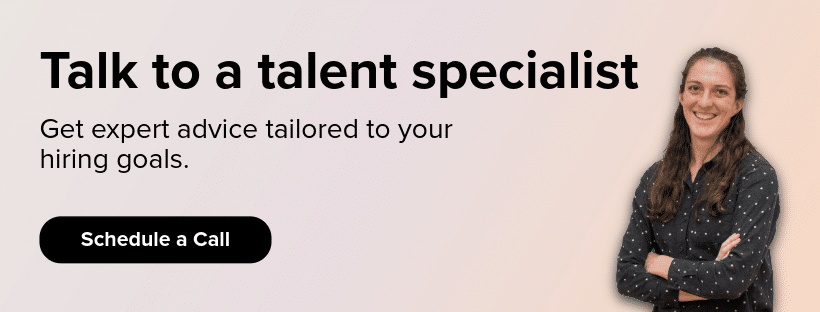Finding the right applicant tracking system (ATS) can make or break your hiring process. In 2025, over 98% of Fortune 500 companies use an ATS, making these systems essential for organizations of all sizes. Whether you’re looking at feature-rich enterprise platforms or lean, affordable tools for small businesses, the key is understanding your specific needs, budget, and how scalable each solution is as your team grows.
In my time at DISHER, I have helped our small team research, test, and implement a solution that truly fits how we work. Hands-on trials and honest team feedback quickly showed us which platforms made hiring easier and which ones just added complexity. Along the way, we picked up valuable lessons about what features actually matter, where to find the best value, and how to make the transition as smooth as possible—insights I’m excited to share in this guide.
Key Takeaways:
- What is an Applicant Tracking System (ATS)?
- Key Terms in ATS
- Best Enterprise-Level ATS Solutions
- Best Small-to-Medium Business (SMB) ATS Solutions
- Typical ATS Implementation Steps
- Key Factors Before You Buy
What is an Applicant Tracking System (ATS)?
An ATS is software that automates and manages the entire hiring process, from posting jobs to onboarding candidates. Modern ATS platforms go well beyond document storage; they enable AI-powered screening, automated communications, analytics, and direct integrations with other HR systems.
Key ATS Features:
- Job posting to multiple boards
- Resume parsing and candidate screening
- Interview scheduling and management
- Candidate communication tools
- Analytics and reporting
- Integration with HR systems like Human Capital Management (HCM) and payroll
Definitions: Key Terms in ATS
- Resume Parsing: Automated extraction of resume details, enabling faster filtering and ranking of applications.
- Open REST API: Standard interface that lets different software platforms “talk” to each other, making integrations with payroll or HRIS possible.
- SOC 2 Type II: A Strict security compliance standard for data handling and privacy.
- PEPM: “Per-employee per month”—commonly used SaaS pricing structure.
- DEI: Diversity, Equity, Inclusion—features in hiring software that help reduce bias.
- HCM Integration: Automated data flow between the ATS and HCM to streamline the talent acquisition and employee lifecycle
At-a-Glance: Top ATS Options
| Platform | Ideal For | Standout Strengths | Key Limitations | Starting Price |
| iCIMS Talent Cloud | Global Enterprises | 800+ integrations, enterprise security, handles 50k+ candidates | Complex interface, high implementation costs | $14,000/year |
| Workday | Large orgs using Workday HCM | Seamless HCM integration, analytics | High cost, complex implementation | $50,000+/year |
| Greenhouse | Tech, Structured Hiring | 500+ integrations, DEI focus | No free trial, recent UI issues | $6,000+/year |
| Zoho Recruit | SMBs, Startups | Free tier, scalable pricing | Limited advanced AI, basic automation | Free–$90/user/mo |
| JazzHR | Quick Implementation Needs | Fast setup, budget-friendly | Fewer advanced features, scalability limits | $39–$299/mo |
| Manatal | SMBs needing AI | AI-powered, mobile-friendly | Limited integrations, API restrictions | $15/user/mo |
Enterprise-Level ATS Solutions
- Strengths: 800+ integrations, handles up to 50,000 candidates, advanced security (ISO 27001, SOC 2 Type II), AI automation cuts time-to-fill by up to 50%.
- Limitations: Complex, dated UI; high implementation costs, no live chat, pricing is opaque.
- Best For: Multinationals with custom workflows.
- Starting Price: $14,000/year (custom quotes).
- Strengths: Deep HCM integration, advanced analytics, built-in compliance, AI-driven tools.
- Limitations: Costly ($50,000+/year), complex setup, steep learning curve.
- Best For: Large orgs already on Workday.
- Starting Price: $50,000+/year.
- Strengths: 500+ integrations, structured interviews, DEI tools, collaborative workflows.
- Limitations: $6,000+/year, no free trial, additional setup fees.
- Best For: Tech and growth companies.
- Annual Cost Example: $6,500 for small teams; higher for larger organizations.
Bullhorn and Lever
- Bullhorn excels in staffing (integrated CRM/ATS, strong mobile app; costs can be high).
- Lever is strong on usability and CRM features for mid-market.
- Note: Always request direct quotes for enterprise plans due to rapid 2025 market changes.
Small-to-Medium Business ATS Solutions
- Strengths: Free for single recruiter, affordable paid tiers, integrates with Zoho and third-party apps.
- Limitations: Basic AI, less customization for complex needs.
- Pricing: Free–$90/user/month.
- Strengths: Quick to implement, budget-friendly, easy onboarding.
- Limitations: Limited advanced features.
- Pricing: $39–$299/month.
Manatal, Workable, CEIPAL ATS, CATS ATS
- Strengths: Mobile-friendly, AI-enabled, and transparent pricing.
- Limitations: May lack deep integrations or analytics.
- Pricing: $15–$110/user/month; some platforms require a minimum number of users.
Free & Entry-Level Options
- Zoho Recruit Free Edition: For very small businesses.
- SmartRecruiters Free Plan: Basic entry plan for startups.
- Market Pricing: Most ATSs for SMBs cost $10–$100/user per month for standard tiers.
Typical ATS Implementation Steps
To ensure a smooth ATS integration, start by setting clear goals, mapping current processes, and building a cross-functional team. Configure system roles and connect key tools like your HRIS and job boards, then provide role-based training with sandbox access so users can practice.
Test and migrate data carefully, followed by a pilot to gather feedback and fix issues. Once you’re ready, roll out organization-wide with strong support in place. Finally, keep improving by tracking key metrics such as time-to-fill and quality-of-hire, and refine workflows and training as needed.
Quick Comparison Table: Enterprise vs. SMB ATS
| Feature | Enterprise ATS | SMB ATS |
| Typical Cost | $14K–$125K+/year | $10–$100/user/mo |
| Integrations | Extensive (800+ options) | Moderate (core HR/recruiting tools) |
| AI Features | Advanced, often built-in | Basic to moderate |
| DEI Tools | Common | Increasingly included |
| Mobile App | Most platforms | Most platforms |
| Implementation | 2–8 months (complex) | 1–4 weeks (fast setup) |
| Support | 24/7, dedicated manager | Chat/email/online docs |
| Free Trial | Rare | Frequently available |
Key Factors Before You Buy
When evaluating an ATS, consider whether it integrates smoothly with your HR tools, payroll, and assessments, as well as its ability to scale with hiring growth across multiple locations. Ensure it meets your security and compliance needs, particularly in regulated industries like healthcare, finance, or global organizations. Finally, assess your return on investment (ROI)—most ATS platforms reduce time-to-hire by 20% or more and save recruiters at least 15 hours per week.
Conclusion & Takeaways
Enterprise organizations should prioritize integration and scalability—even at higher price points—while SMBs should focus on usability, flexibility, and support. Before buying, demo at least two options using real recruiter workflows, and get transparent quotes based on headcount and growth forecasts.
Connect with DISHER Talent Solutions today to discover how the right ATS and expert support can transform your hiring process. Our talent consultants are ready to help you implement an efficient, scalable recruiting solution tailored to your needs. Reach out to get started and build your best team faster.





